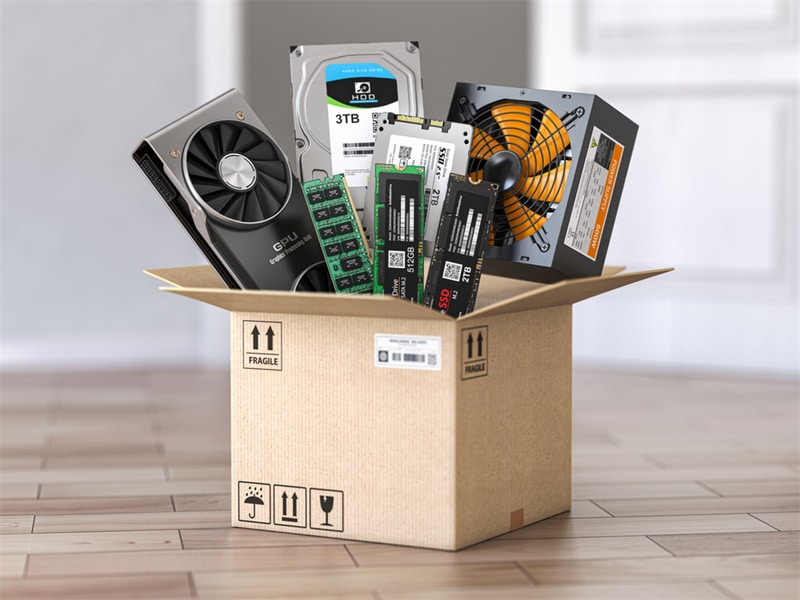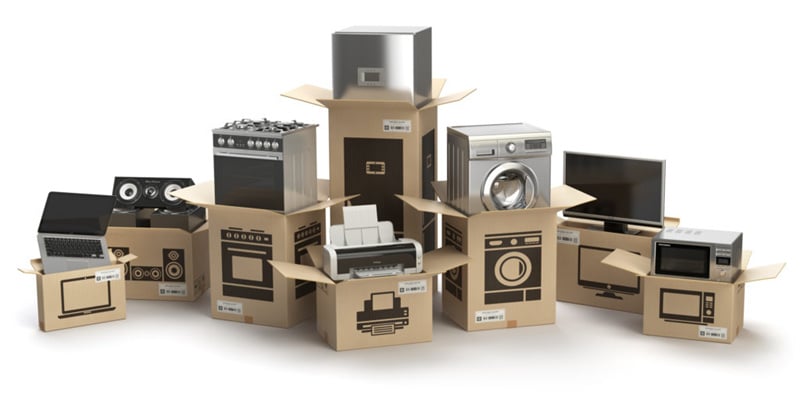
Electronics are sensitive items that can easily be damaged as you move to your new home. Read our blog for some tips on how to handle them safely.
Moving your electronics can become disastrous if you don't do things right. You can end up damaging or breaking your electronics in the moving process. However, you can enforce appropriate measures to safeguard them.
Ideally, you need to be thorough in the packing process. Once you get to your new home, it'll be easy to unpack and set up the electronics for use. That said, here are seven tips on how to handle your electronics safely:
1. Hire Professional Movers
First things first, you'll need a moving company. Electronics are typically expensive and delicate. Thus, it's best to work with professionals like Movinghub. To guide your decision on choosing the best moving company, visit each official site for more information on their services and track record.
Moving companies have the necessary expertise in packing, loading, and unloading your appliances. This way, you're guaranteed protection and safety for your devices.
Contrary to the popular opinion that an electronic device can only get damaged if it's dropped, a lot of shaking during moving can result in a malfunction. As such, ensure the movers take caution in loading and unloading your electronics and driving.
2. Use Suitable And Essential Packing Materials

Another primary consideration when moving your electronics is the packing materials. It'd be best to use the original boxes that they come in when you buy them. It's because they fit perfectly in their original packing materials. However, if you don't have them, you can use other packing materials such as moving boxes and sturdy cartons. You'll also need scissors, tape, felt-tip markers, and newsprint.
When packing electronics, make it a habit to cover the electronics or stuff the box with styrofoam or any soft material. Alternatively, you can use your towels and linen for cushioning. It helps avoid breaking and fills the space inside the boxes to prevent movement. Then, fasten the box with tape to safeguard the item. In addition, you can use bubble wrap for additional cushioning.
3. Adhere To The Product Manual
If you still have the manual of your electronics, you can use it to guide your packing. Most manuals have instructions on disconnecting and packing an item when moving. Read the instructions and follow what the manual says. You can better understand the basic concepts of electronics and how to safeguard them from damage.
If you've lost the hard copy, you can find details from the manufacturer's website on packing. Since they know the item better, it'd be best for you to consider their instructions.
4. Label Your Electronics And Cables
Once you've put your electronics in the packing boxes, you must be able to identify them quickly. Every electronic appliance requires unique and special care when loading onto moving vehicles. Dishwashers, fridges, washing machines, or vacuum cleaners have specific handling requirements. And so, you need to inform the handlers of the items they're handling through labels on the box.
Label the box on the surface if you place several electronics together, such as extensions, cords, and cables. Also, you can mark the wires or cords using colored stickers. Doing so also reduces your hassle when reassembling the electronics.
5. Consider Storage Conditions

Before loading your items in the truck, consider storage conditions. First, seal the boxes tightly to avoid letting in the dust. Secondly, some electronics such as your television and computer are sensitive to climate, thus should be stored in climate-controlled units. On the other hand, compact disks (CDs) can't handle hot temperatures. The CDs can expand and break if subjected to extreme heat.
So, as you pack your electronics, you should have such factors in mind. Also, ensure the storage unit you choose for your electronics is high enough to prevent water damage. Again, you'd want to check for humidity levels. High levels can result in moisture which could render your electronics unusable.
6. Empty Your Devices
A lot can happen while moving. For electronics like toner, the ink can spill and make a real mess if you don't remove it from the cartridge. If it spills on your disks, it could damage them. Sometimes the ink may find its way to your clothes.
If you don't want to bear the expense of detergents to clean the ink stains, it'd be best to empty the ink from your toner before moving. And it's not only the mess you should be concerned about; spilling ink can damage the integrated circuits in a device and render them non-functional.
Ink has a similar adverse effect as water. Thus, emptying your electronics while in transit is critical.
7. Remove The Batteries
Some of your electronics may be using batteries. Detach your batteries from your devices to avoid damage through leaks. On that note, remove the batteries from your laptops, remote controls, and torch.
It's easier to remove the batteries than to buy new devices due to damage.
Conclusion
Following the appropriate safety measures when handling your electronics can guarantee seamless moving. Pack them safely to reduce the rate of damage that could result from movement.
You can consult the manufacturer's manual on how to best pack your electronics to secure them well. Besides, hiring a professional mover is the most guaranteed option for the safety of your electronics.










